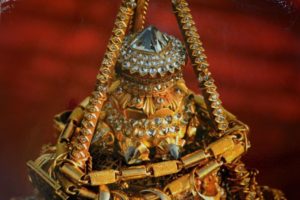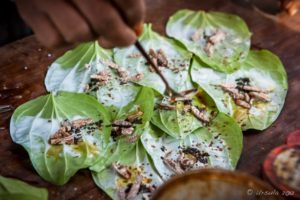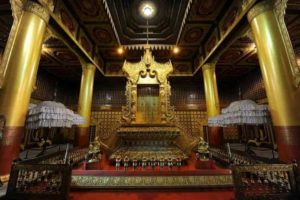
Diamond Orb
According to researchers Sanchi Stups of Bharat, that is India, are the prototypes of modern-day pagoda. Myanmar prototypes Baw Baw Gyi and
Feature tours are the best thoughts for your travel experience in Myanmar. The tours extend the sustainability of local destinations throughout the journey.
Our Small Private Group tours are designed for safety measure and escape
the crowd to see the highlights of Myanmar with enough downtime to relax,
reflect, and soak up the atmosphere.
Multi-day tours are organized into the depths of Myanmar and to see captivating nature, culture, local experiences, and traditions of the people.
ONE DAY TOURS are conducted by the tour guide to explore more about culture, history, community, and local lives for a full-day excursion in Mandalay and around privately.

In the vicinity of many stupas and temples somewhere on the terrace or plinth, we can find very strange figures of creatures. They usually stand at the corners with two bodies joined at the shoulders; one body on each side with human head and neck resting on a human shoulder joining the two lion bodies joined at the shoulders; one body on each side with human head and neck resting on a human shoulder joining the two lion bodies in perfect symmetry. The creature is known as manu-thiha. In Sanskrit vocabulary manu means human and thiha mean lion: man-lion a very apt name of course.
Many legends surround this manu-thiha and its origin. One of the most quoted is the one with its connections to the ancient kingdom of Suvana-bhumi now called Thaton. According to that legend King’s children were always devoured by an ogress and her one and a half thousand attendants on the day they were born. This tragedy went on for some time.
But one-day Buddhist missionary party of two Bikkhus Shin-soka and Shin-ottra appeared on the scene. That day happened to be the day on which the queen was expecting a son. The Buddhist bikkhus created three thousand strange creatures with human head and twin bodies of lions. When ogress and her attendants saw those creatures they ran back to their base in the sea underwater: needless to say the ogress and her attendants never returned to threaten the newborn prince again.
The child so saved became king in due course of time. He ordered the whole nation to draw the likeness of these manu-thiha on palm leaves and hang around the necks of their children to ward off the danger of the aggressive ogress. With passing of time, the creature found its way on to the terraces of temples and stupas.
Sourced: Myanmar Culture Traditions and Scenery, Mythical Creatures
by U Than Pe, Tour guide

According to researchers Sanchi Stups of Bharat, that is India, are the prototypes of modern-day pagoda. Myanmar prototypes Baw Baw Gyi and

According to researchers betel chewing habit came from majjima desa, that is present Indian subcontinent, along with Buddhism. The habit was certainly

Throne is symbol of royalty. It also embodies sovereignty. It is the seat of power. It passes from sovereign to sovereign. As